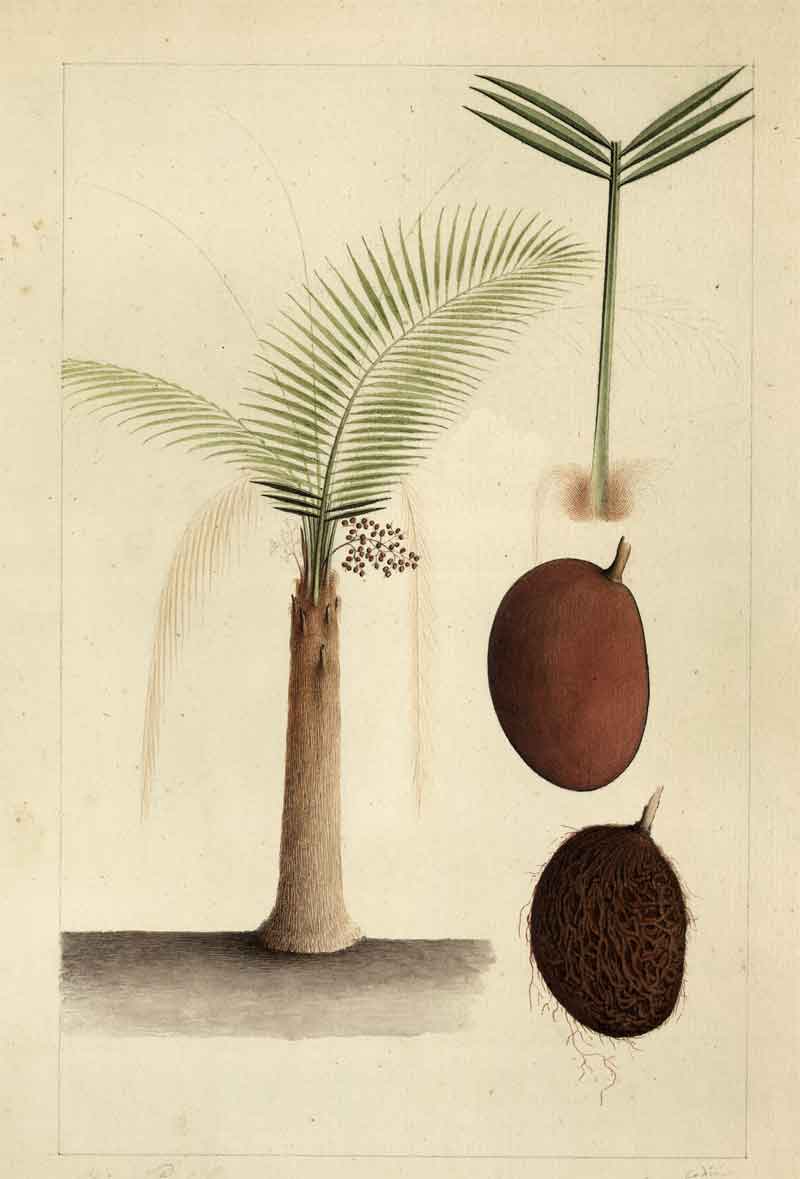Classification System: APG IV
Superregnum: Eukaryota
Regnum: Plantae
Cladus: Angiosperms
Cladus: Monocots
Cladus: Commelinids
Ordo: Arecales
Familia: Arecaceae
Subfamilia: Arecoideae
Tribus: Leopoldinieae
Genus: Leopoldinia
Species: L. piassaba – L. pulchra
Source(s) of checklist:
Name
Leopoldinia Mart., 1824
Type species: LT designated by H. E. Moore, Gent. Herb. 9: 265 (1963)

Leopoldimia piassaba
References
Primary references
Martius, C.F.P. 1823−1850. Historia naturalis palmarum. Vol. 2. 152 pp. 101 lam. Lipsiae. BHL Reference page. : 2: 58
Links
Govaerts, R. et al. 2020. Leopoldinia in Kew Science Plants of the World online. The Board of Trustees of the Royal Botanic Gardens, Kew. Published online. Accessed: 2020 Oct 12. Reference page.
International Plant Names Index. 2020. Leopoldinia. Published online. Accessed: Oct 12 2020.
Tropicos.org 2020. Leopoldinia. Missouri Botanical Garden. Published online. Accessed: 12 Oct 2020.
Catalogue of Life: 2021 Annual Checklist
USDA, ARS, Germplasm Resources Information Network. Leopoldinia in the Germplasm Resources Information Network (GRIN), U.S. Department of Agriculture Agricultural Research Service. Accessed: 09-Oct-10.
Vernacular names
Leopoldinia is a mostly monoecious genus of flowering plant in the palm family from northern South America (Colombia, Venezuela, northwestern Brazil),[2] where they are known as jará palm or pissava palm. The two known species are commercially important,[3] especially L. piassaba, which yields sustenance and construction material. The genus is named for Maria Leopoldina, archduchess of Austria, and Brazilian empress.[4]
Description
The trunks are clustering in L. major, occasionally clustering in L. pulchra, and solitary in L. piassaba; they reach 15 cm wide to 6 m tall, and are usually covered in old, extremely fibrous leaf bases. The pinnate leaves, up to 5 m, are carried on long, hairy petioles which disintegrate into black, fibrous masses against the trunk. The 1 m leaflets are once-folded, linear, regularly arranged, and either acuminate or briefly bifid.[3]
The much branched inflorescence is short, brown, and hairy and emerges within the leaf crown. There may be male and female flowers on different inflorescences, they may alternate along the same branches, in some cases the female flowers are proximal while the male's are distal, some are hermaphroditic and others are simply, but rarely, dioecious. Developing from one carpel, the fruit matures to red in color, may be ellipsoidal, laterally flattened or disciform,[3] and contains one seed.[4]
Distribution and habitat
Endemic to western Brazil, southern Venezuela and Colombia's Amazonian regions, all are low lying and occupy periodically flooded, tropical rain forest. Both L. major and L. pulchra grow on stony islands and alongside the banks of the Rio Negro and other blackwater rivers; L. piassaba grows in conspicuous groves, most commonly on sandy flats. L. major is the only one which will reach and contribute to the forest canopy, the others are strictly undergrowth subjects.
Cultivation and uses
Leopoldinia palms are rare in cultivation and practically unknown in herbaria but are extensively used in their natural range. The trunks are used in construction and as fence posts, the fruit from L. major is burned to create a salt substitute and L. piassaba leaves are used in construction. The fruit from L. piassaba is mashed and mixed with water creating a thick, alcoholic beverage;[3] the tough, long leaf base fibers, known as pissava, are commercially viable as a source for rope, brooms, and other products.[3]
References
Martius, Historia Naturalis Palmarum 2:58. 1824
Kew World Checklist of Selected Plant Families
Uhl, Natalie W. and Dransfield, John (1987) Genera Palmarum - A classification of palms based on the work of Harold E. Moore. Lawrence, Kansas: Allen Press. ISBN 0-935868-30-5 / ISBN 978-0-935868-30-2
Riffle, Robert L. and Craft, Paul (2003) An Encyclopedia of Cultivated Palms. Portland: Timber Press. ISBN 0-88192-558-6 / ISBN 978-0-88192-558-6
Retrieved from "http://en.wikipedia.org/"
All text is available under the terms of the GNU Free Documentation License

